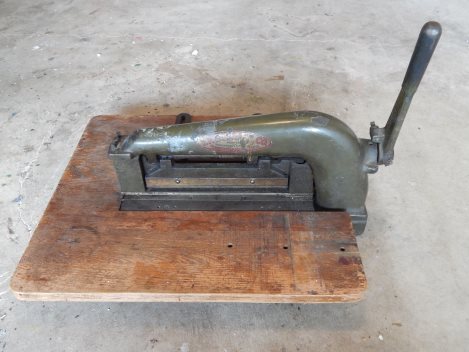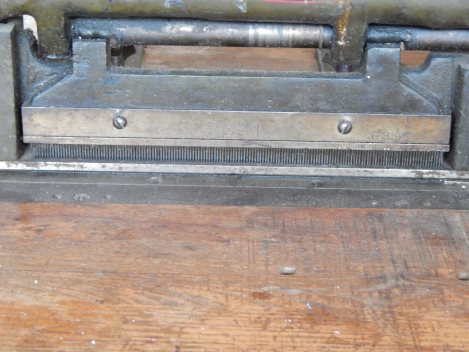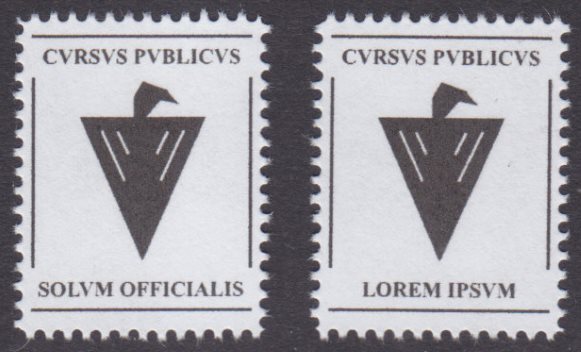Rosback tabletop perforator for sale
Update: this machine has been sold. Thank you for your interest!
When I started seriously searching for a pinhole perforating machine back in early 2014, I had no idea whether or not I would ever actually get to own one. Late that year, however, I did have the opportunity to purchase a Franklin tabletop perforator.
Since that time, I’ve been able to purchase two other perforating machines: a Southworth tabletop perforator, which I use to perforate my Philosateleian Post local post stamps, and a recently acquired Rosback tabletop perforator. I’m now offering the Rosback for sale!
About the machine
In addition to its better known treadle-operated models, Rosback produced several different tabletop perforators. This lovely piece of machinery with its utilitarian military green paint is neither the oldest nor the newest of those tabletop machines, but somewhere in the middle, probably dating to the 1930s.

As is often the case with these old machines, this one has some cosmetic wear. For example, the alignment guide that was originally bolted on to the front of the wooden table has been removed. In addition, the bolt that secures the handle to the perforator apparently broke at some point, and a previous owner drilled a hole through the handle and the shaft to which it attaches, securing the handle with a replacement bolt and square nut not original to the machine. From what the owner of another one of these perforators has told me, I get the idea that this is probably actually an improvement over the original design, as it’s impossible for the handle to slip on the shaft when the machine is being operated.


Despite these minor wear and tear notes, the perforator works flawlessly. It has all of its pins, which are nice and sharp—not worn out—and that means you can punch a 10-inch long line of nice, crisp holes. As a bonus, the perforator still has its original wooden table; that’s something a lot of perforating machines (including the Franklin I originally purchased) have lost along the way. In addition, the rear of the table has an adjustable guide that can be used to align the paper you’re perforating.



My price
So, how much am I asking for this beautiful item? It can be yours for just $500 plus shipping (unless you make a trip to San Antonio to pick it up). If you come to San Antonio, or if I ship to a Texas address, I also have to collect 8.25% sales tax since various state and local government entities want their piece of the pie, too.
The perforator weighs somewhere around 65 pounds. I’ll ship the perforator itself and the wooden table in separate packages to help make them as manageable as possible.
If you’re interested, please contact me right away; include your address so I can provide an estimate of the shipping cost, and let me know how you plan to use the machine. I look forward to getting it into a good home!

